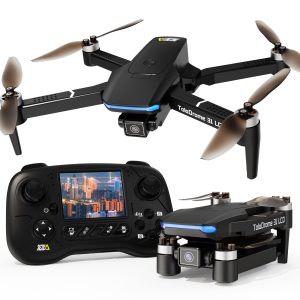Welcome to our comprehensive review of the best drones of 2023! With the rapid evolution of drone technology, this year has brought us some of the most fascinating models the industry has to offer. From beginners to pros, from cinematographers to racing enthusiasts, there’s something for everyone in the 2023 lineup.
We’ve been hands-on with these impressive flying machines, evaluating their features, performance, and ease of use. We’ve delved into their technical attributes to give you an in-depth look at what each drone has to offer. Instead of giving them star ratings, as many reviews do, we’ve taken a different approach.
We recognize that each drone shines in its niche, offering unique features and characteristics that make it the best in its class. Comparing them on a single scale would do a disservice to their individual strengths. So instead of ranking them, we’ve highlighted their pros and cons to help you decide which model is best for your needs.
So let’s explore these incredible drones and find out what makes them the top picks for 2023!
- DJI Mini 2 SE
- DJI Mini 2
- DJI Mavic 3
- Autel Evo Lite+
- Ryze Tech Tello
- Parrot Anafi
- DJI FPV
- EMAX Tinyhawk 2
- DJI Mini 3
- DJI Mini 3 Pro
- DJI Avata
- DJI Air 2S
- DJI Phantom 4 Pro v2.0
- Autel Evo Nano+
DJI Mini 2 SE
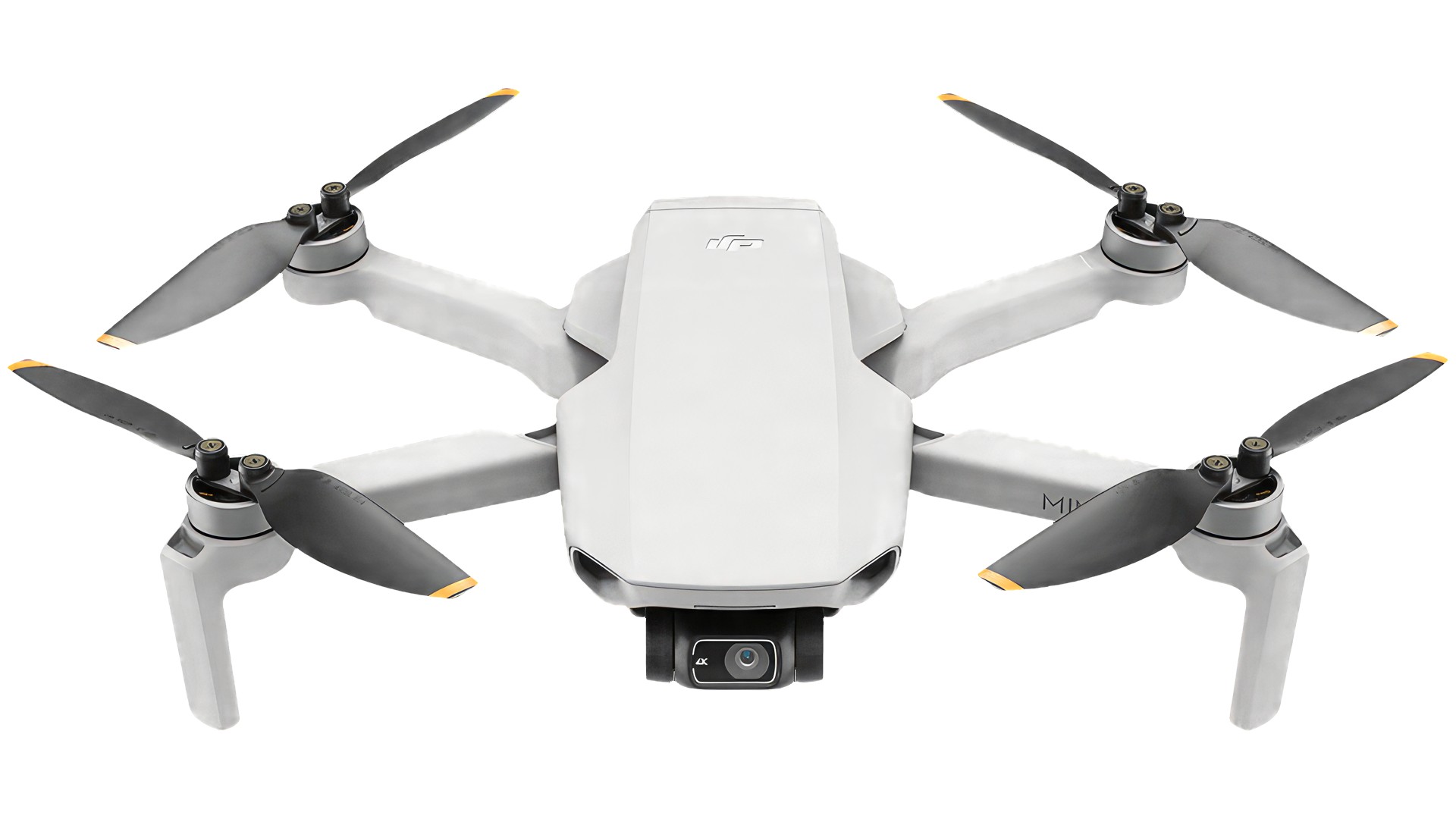
Unveiling the Technical Attributes
The DJI Mini 2 SE is a fantastic introduction to the world of drone technology, weighing in at just 249 grams. This lightweight, collapsible drone features a 1/2.3-inch CMOS sensor that captures 12MP still images and up to 2.7K video. With a maximum flight time of 30 minutes and a top speed of 13 m/s in sport mode, this drone is built to perform.
Equipped with GPS+GLONASS and a 3-axis gimbal, the DJI Mini 2 SE ensures stable, smooth footage even in challenging conditions. The drone operates on dual frequency bands for a reliable, interference-free connection. Its maximum takeoff altitude of 3000m and wind resistance of up to 10.5m/s prove its ruggedness and reliability.
Why the DJI Mini 2 SE Deserves a Place in Your Drone Collection
The DJI Mini 2 SE is an excellent entry-level drone that combines lightweight design, ease-of-use, and powerful performance. Its portability and feature set make it a standout in its class, delivering high-quality footage, remarkable range, and admirable flight time. Whether you’re a beginner or an experienced drone enthusiast, the DJI Mini 2 SE offers a range of features that are easy to master and fun to use.
Made with the Novice in Mind
With easy-to-use features and intuitive controls, the DJI Mini 2 SE is designed to help beginners take to the skies with confidence. Its compact size makes it easy to carry around, while its rugged design ensures it can withstand the occasional mishap. With its impressive performance and easy-to-use features, the DJI Mini 2 SE makes flying a fun and accessible experience for everyone.
Pros
- Compact and lightweight
- Excellent image and video quality
- Robust wind resistance
- Impressive flight time
- Beginner-friendly features
Cons
- Limited obstacle detection and avoidance
- Lacks some advanced shooting modes
The Final Take on the DJI Mini 2 SE
The DJI Mini 2 SE is an excellent choice for beginners, offering a great balance of performance, portability and ease-of-use. Its rugged design and user-friendly features make it an ideal beginner’s drone. While it may lack some advanced features found in more expensive models, the DJI Mini 2 SE offers excellent value, making it a top choice for those new to the world of drone photography and videography.
DJI Mini 2
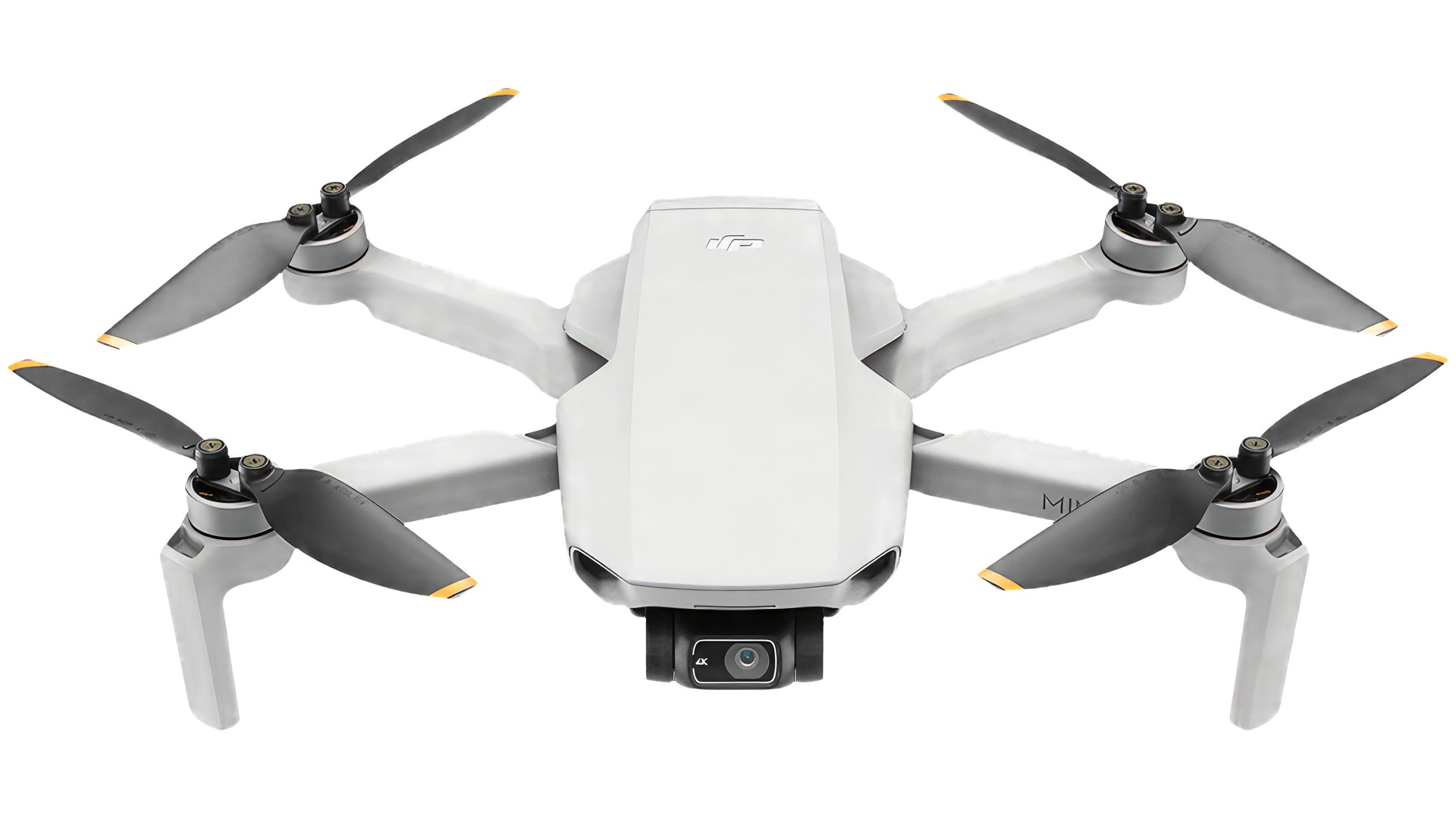
An In-Depth Look at its Technical Attributes
The DJI Mini 2 is a compact yet powerful drone that weighs just 249 grams. It’s equipped with a 1/2.3″ CMOS sensor capable of 12MP stills and 4K UHD video at 30fps. The drone uses OcuSync 2.0 for transmission, ensuring a stable, interference-free connection at distances up to 10 km. Its three-axis motorized gimbal ensures stable, shake-free footage. The DJI Mini 2 has a maximum flight time of 31 minutes and a top speed of 57.6 km/h thanks to its efficient and powerful motors.
Why DJI Mini 2 Deserves a Spot in Your Collection
The DJI Mini 2 rises to the top of our list for its unbeatable combination of power, portability and performance. Despite its small size, it doesn’t compromise on features. The drone delivers high-quality footage, excellent range, and impressive flight time. It’s perfect for those entering the world of drone photography or videography, offering advanced features without overwhelming the user.
Designed with Beginners in Mind
The DJI Mini 2 is an excellent choice for beginners due to its user-friendly features. It offers automated flight modes, including QuickShots, that allow beginners to capture stunning, cinematic footage with ease. Its lightweight design exempts it from certain regulations, making the learning process easier. It also comes with DJI’s renowned Flight Tutorial to help beginners get off the ground.
Pros
- Lightweight and portable
- Exceptional video and image quality
- Long transmission range
- Impressive battery life
- User-friendly with beginner-oriented features
Cons
- No obstacle avoidance sensors
- Limited advanced shooting modes compared to higher-end models
The Final Verdict
The DJI Mini 2 is a great beginner’s drone that balances portability, performance, and price. Its user-friendly features make it a great starter drone, yet it’s powerful enough to grow with you as you gain experience. While it lacks some advanced features found in more expensive models, it’s a capable, compact drone that punches well above its weight in the realm of aerial photography and videography.
DJI Mavic 3
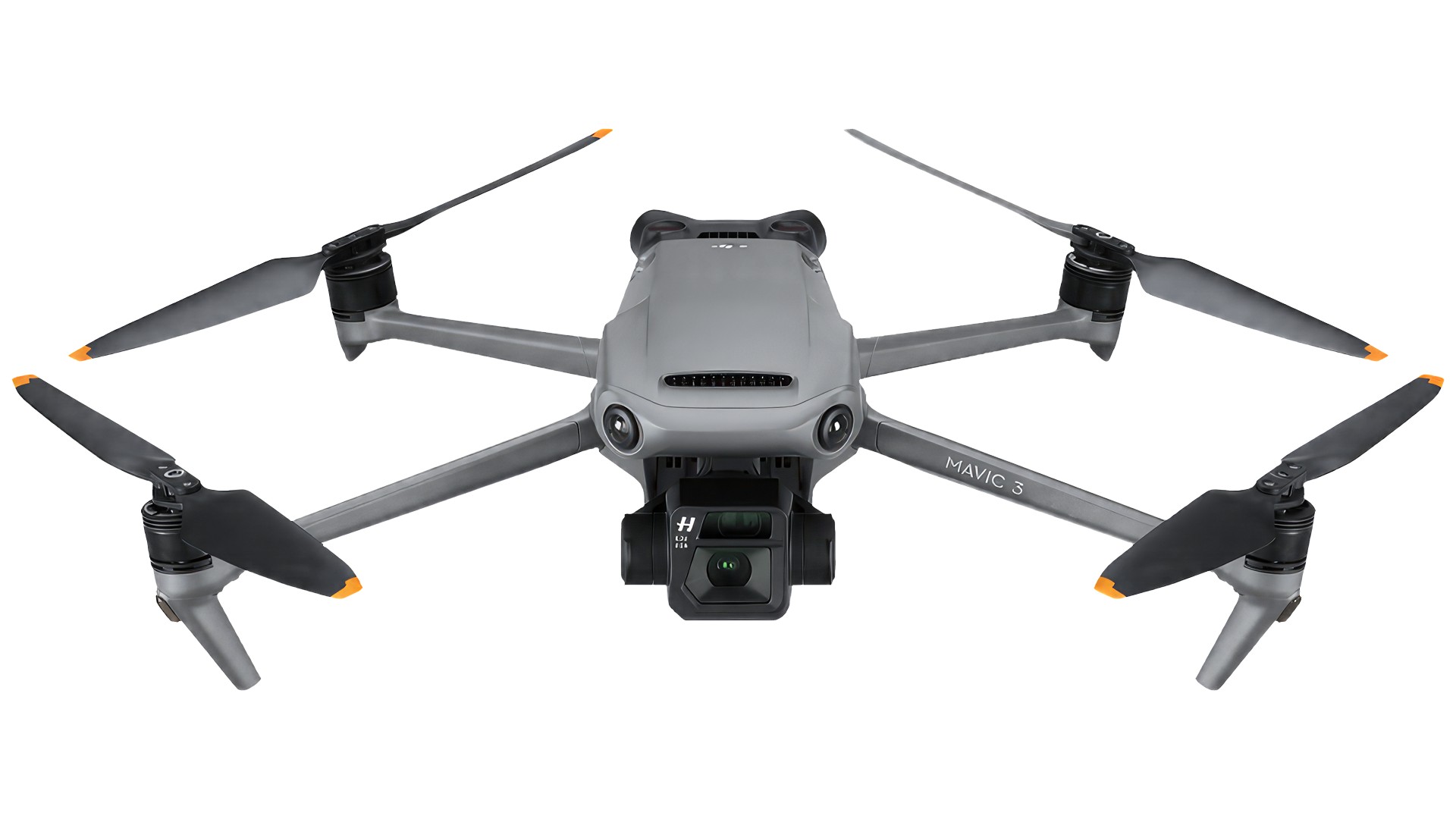
Technical Marvel Unveiled
The DJI Mavic 3 is a premium offering in the DJI fleet, offering a blend of cutting-edge technology and unmatched performance. The drone is equipped with a dual camera setup – a 20MP Hasselblad camera for detailed stills and a 12MP camera for video, capable of 5.1K video recording. The camera setup is complemented by a four-thirds CMOS sensor and 28x hybrid zoom functionality. Powered by OcuSync 3.0, the drone can maintain a solid connection for up to 15 km. It also has an exceptional flight time of up to 46 minutes and can reach a top speed of 68.4 km/h.
The Star Selection: Why DJI Mavic 3?
The DJI Mavic 3 was chosen for its exceptional camera system and long flight time. With a dual camera setup and the prestigious Hasselblad name, it’s designed to provide the best aerial photography and videography experience. The drone’s extended flight time and range make it perfect for professional use, allowing you to capture the most stunning and diverse landscapes.
Targeted Audience: Professional Content Creators
The DJI Mavic 3 is designed for professional photographers, videographers and content creators who need a portable yet powerful drone to capture high-quality, detailed aerial footage. Its advanced features and powerful camera system make it ideal for commercial shoots, film projects and high-end content creation.
Pros
- Advanced dual camera system
- Long flight time and range
- High-quality image and video capture
- Reliable and sturdy construction
- Advanced flight modes and features
Cons
- Requires a significant investment
- May be overkill for hobbyists or beginners
Final Verdict on DJI Mavic 3
The DJI Mavic 3 is a high-end drone that delivers on all fronts. Its advanced camera system, extended flight time, and professional features make it an excellent choice for professionals looking for a high-performance drone. While it may be a significant investment, the value it provides in terms of performance, quality, and capabilities is unparalleled. If you’re a professional content creator looking to capture the world from a new perspective, the DJI Mavic 3 is worth every penny.
Autel Evo Lite+
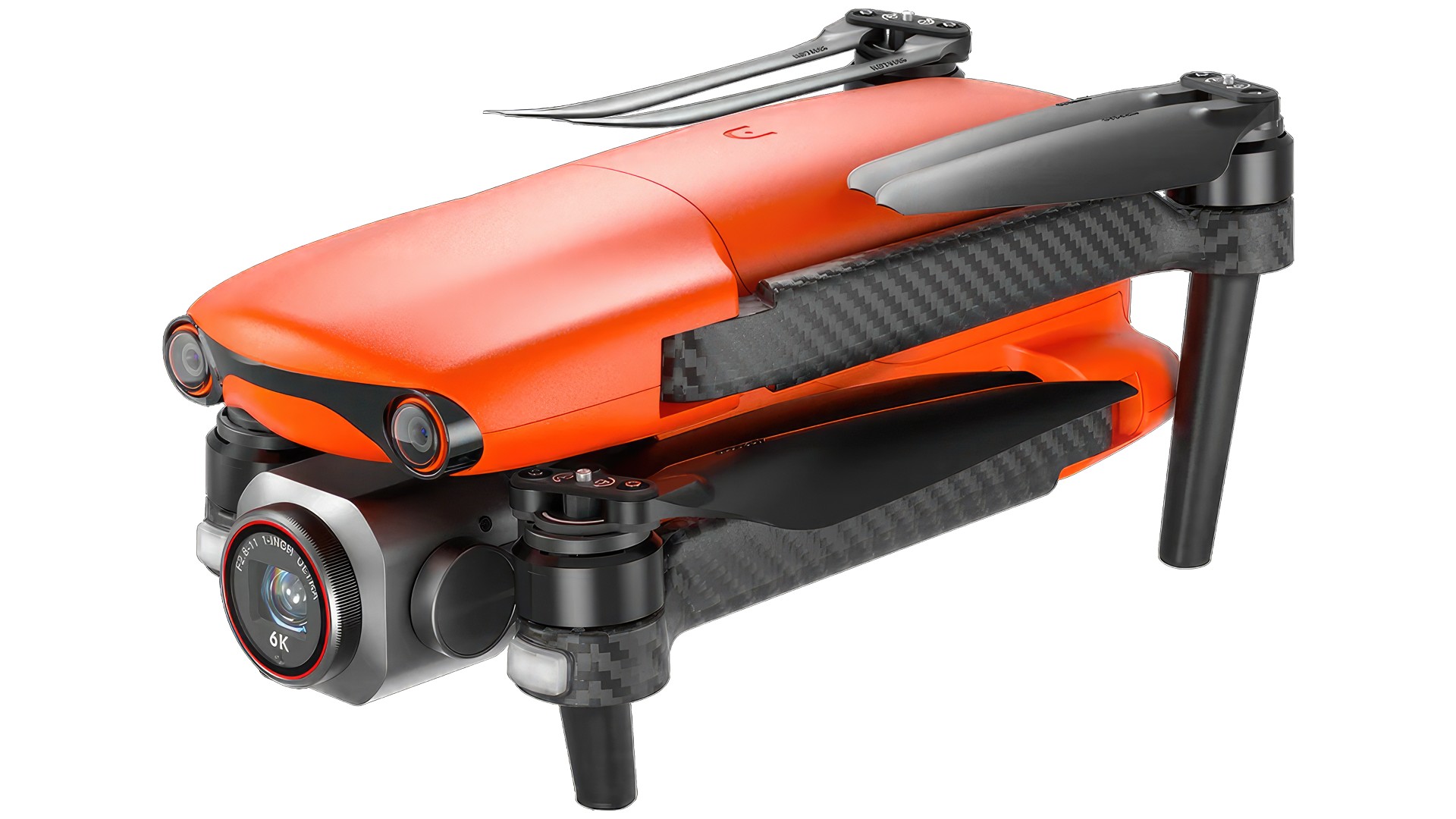
Diving Deep into its Technical Features
The Autel Evo Lite+ brings some serious competition to the drone market, weighing in at a substantial but manageable 835 grams. This drone is equipped with a 1-inch CMOS sensor that can take stunning 20MP photos and record 6K/30FPS video. The Evo Lite+ uses a 12km tri-band image transmission system, providing a stable, interference-free link over considerable distances.
With a three-axis mechanical stabilization gimbal, you can expect exceptionally smooth, professional-quality footage. The battery life of the drone stands out with an impressive flight time of 40 minutes. Safety is also a priority with the Evo Lite+, which features forward, reverse and downward obstacle avoidance. While it does not offer route planning, it does come with 6GB of built-in storage for convenience and a suite of creative apps including Rocket, Orbit, Flick, and Fade Away.
Why the Autel Evo Lite+ Should Be on Your Radar
The Autel Evo Lite+ is a must-have drone for its combination of power, performance and exceptional flight time. The drone’s size and weight do not compromise its features, delivering high-quality footage, impressive range, and battery life that sets it apart from the competition. Whether you’re new to the world of drone photography or a seasoned expert, the Evo Lite+ offers advanced features without overwhelming the user.
A Perfect Choice for Long Flights
The Autel Evo Lite+ is designed for enthusiasts who require extended flight times. With a 40-minute battery life, this drone allows for extended aerial photography sessions, a feature that landscape and wildlife photographers will appreciate. In addition, its software cropping feature allows for portrait shots, adding to its flexibility.
Pros
- Sturdy and robust with powerful features
- Exceptional video and photo quality
- Impressive transmission range
- Outstanding battery life for longer flights
- Built-in storage for convenience
Cons
- Heavier than some other drone models
- Does not offer route planning
Final Thoughts on the Autel Evo Lite+
The Autel Evo Lite+ is an impressive drone with a lot to offer. It offers a fantastic balance of performance, features and flight time. Its user-friendly features and powerful capabilities make it a great choice for all drone enthusiasts, regardless of experience level. While it is slightly heavier than some models and does not offer route planning, its performance, safety features, and impressive flight time make it a very attractive option for those who value long flight times and high-quality aerial footage.
Ryze Tech Tello
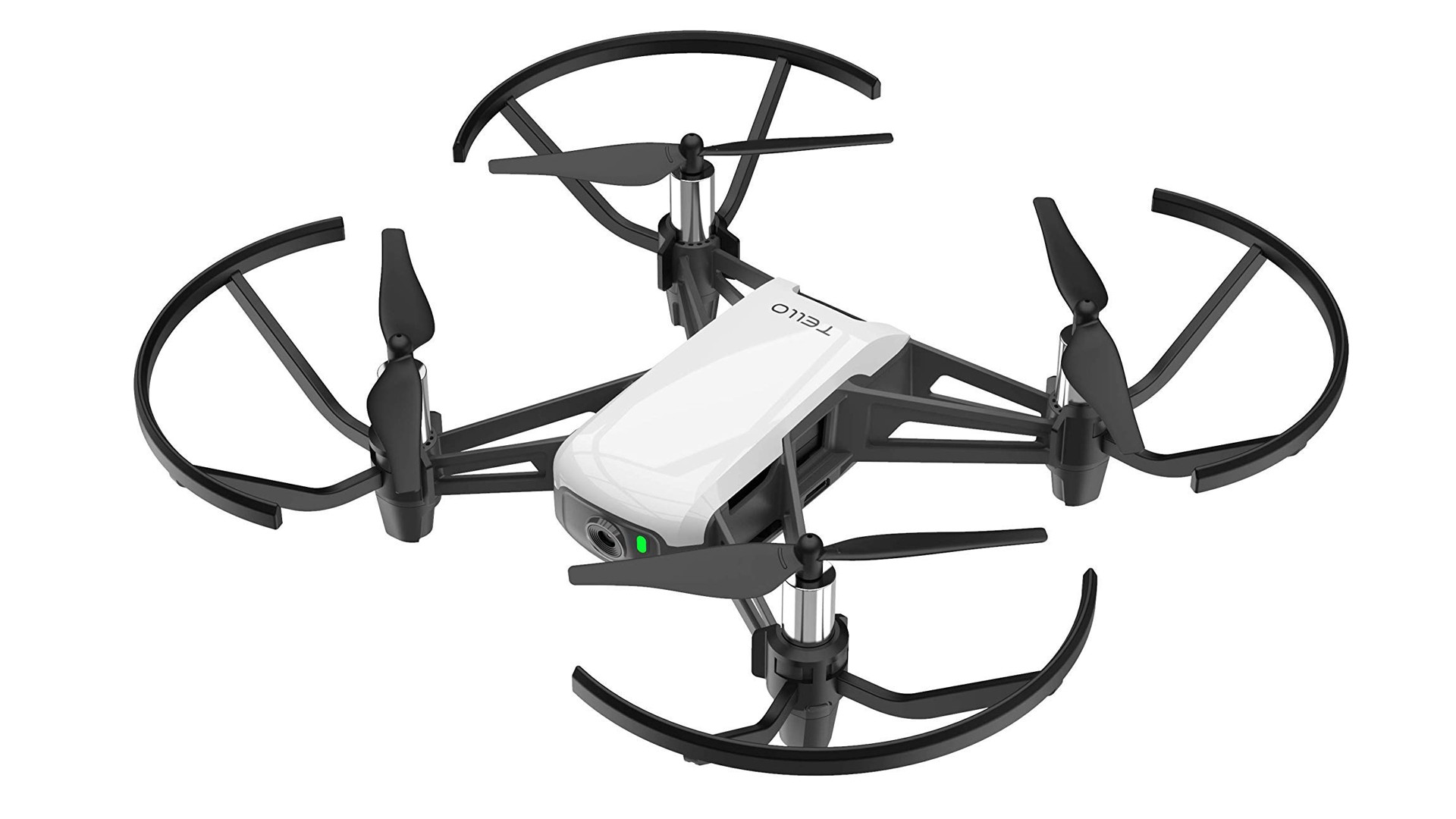
Under the Hood: Tello’s Tech Specs
The Ryze Tech Tello is a compact yet powerful drone packed with impressive features. It comes equipped with a 5MP camera that can capture 720p video, ensuring that young pilots can capture fun aerial footage. The drone is powered by a powerful Intel processor for stable flights and has a flight time of up to 13 minutes. The Tello can reach speeds of up to 8 m/s and has a transmission range of up to 100 meters. It also supports Scratch programming, so kids can learn to code while having fun flying their drone.
Pick of the Lot: Why Choose Tello?
The Ryze Tech Tello stands out for its combination of affordability and functionality. Priced under $100, it offers a user-friendly interface, simple controls, and impressive flight capabilities that make it a great choice for young and novice drone enthusiasts. Its programming compatibility adds an educational aspect, introducing kids to the world of coding in a fun and engaging way.
Intended Flyers: Future Drone Pilots
Designed with ease of use in mind, the Ryze Tech Tello is an excellent choice for kids and beginners. Its intuitive interface, simple controls, and safety features make it easy for young pilots to navigate. In addition, its scratch programming feature provides a unique learning opportunity, making it a perfect educational tool.
Pros
- Affordable and great value for money
- Easy to fly, perfect for beginners
- Scratch programming for educational fun
- Decent camera for the price
Cons
- Limited flight time
- Range might be limited for advanced users
Final Verdict: A Great Start for Young Aviators
The Ryze Tech Tello is a remarkable entry-level drone that offers affordability without compromising on essential features. Its simple controls and educational programming feature make it a fantastic tool for introducing kids to the world of drones. While it may lack the advanced features of more expensive models, the Tello is a great starting point for beginner pilots and kids.
Parrot Anafi
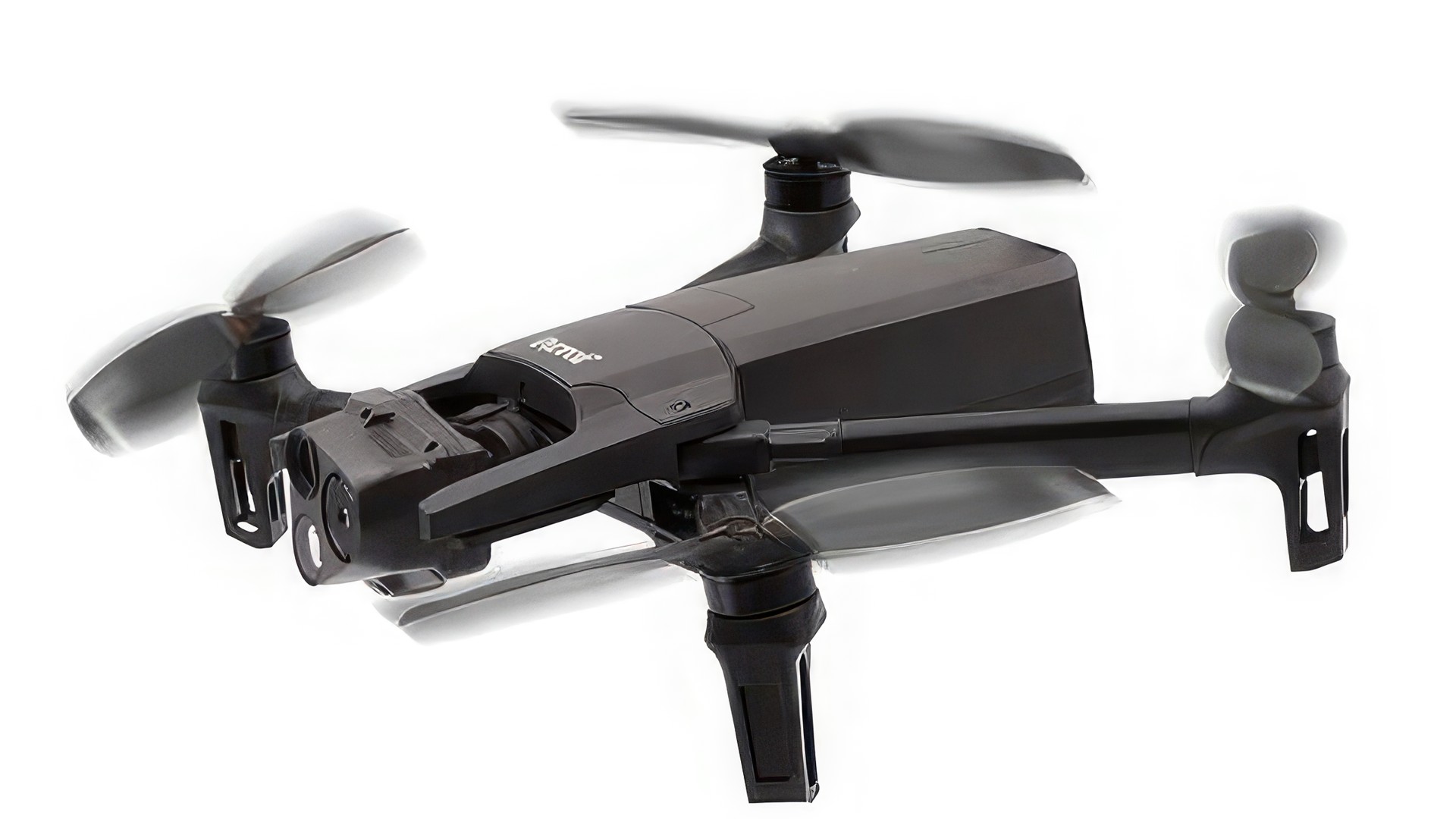
Delving into the Details: Anafi’s Tech Specs
The Parrot Anafi is a high quality compact drone designed with portability in mind. Its ultra-light frame (320g) houses a 21MP camera capable of capturing 4K HDR video and offering 2.8x lossless zoom. One of its standout features is the ability to tilt the camera 180 degrees for unique shooting angles. It has a flight time of up to 25 minutes and can reach speeds of up to 55 km/h. The Anafi offers a transmission range of 4 km with its robust Parrot Skycontroller 3.
Why Anafi: The Non-DJI Standout
While DJI has dominated the drone market, the Parrot Anafi is emerging as a compelling alternative. It offers similar features and capabilities, but stands out with its unique camera mobility and compact, lightweight design. The Anafi delivers a high-quality flying experience, making it a competitive choice for drone enthusiasts looking for alternatives to DJI.
Target Audience: Explorers and Adventurers
The Parrot Anafi is designed for explorers and adventurers who value portability without compromising on camera quality. Its lightweight design, long-range control, and impressive camera features make it an ideal companion for travelers and outdoor enthusiasts.
Pros
- Compact and lightweight design
- Unique camera tilting capabilities
- Impressive photo and video quality
- Long-range control
Cons
- Lacks obstacle detection
- Dependent on smartphone for control
Our Take: A Quality Alternative Worth Considering
The Parrot Anafi presents itself as a viable option for those looking to break out of the DJI-dominated landscape. With its high-quality camera features, portability, and impressive range, it offers a unique package for adventurers and explorers. Despite a few shortcomings, the Anafi’s outstanding features make it a drone worth considering for those seeking quality and compactness in a non-DJI model.
DJI FPV
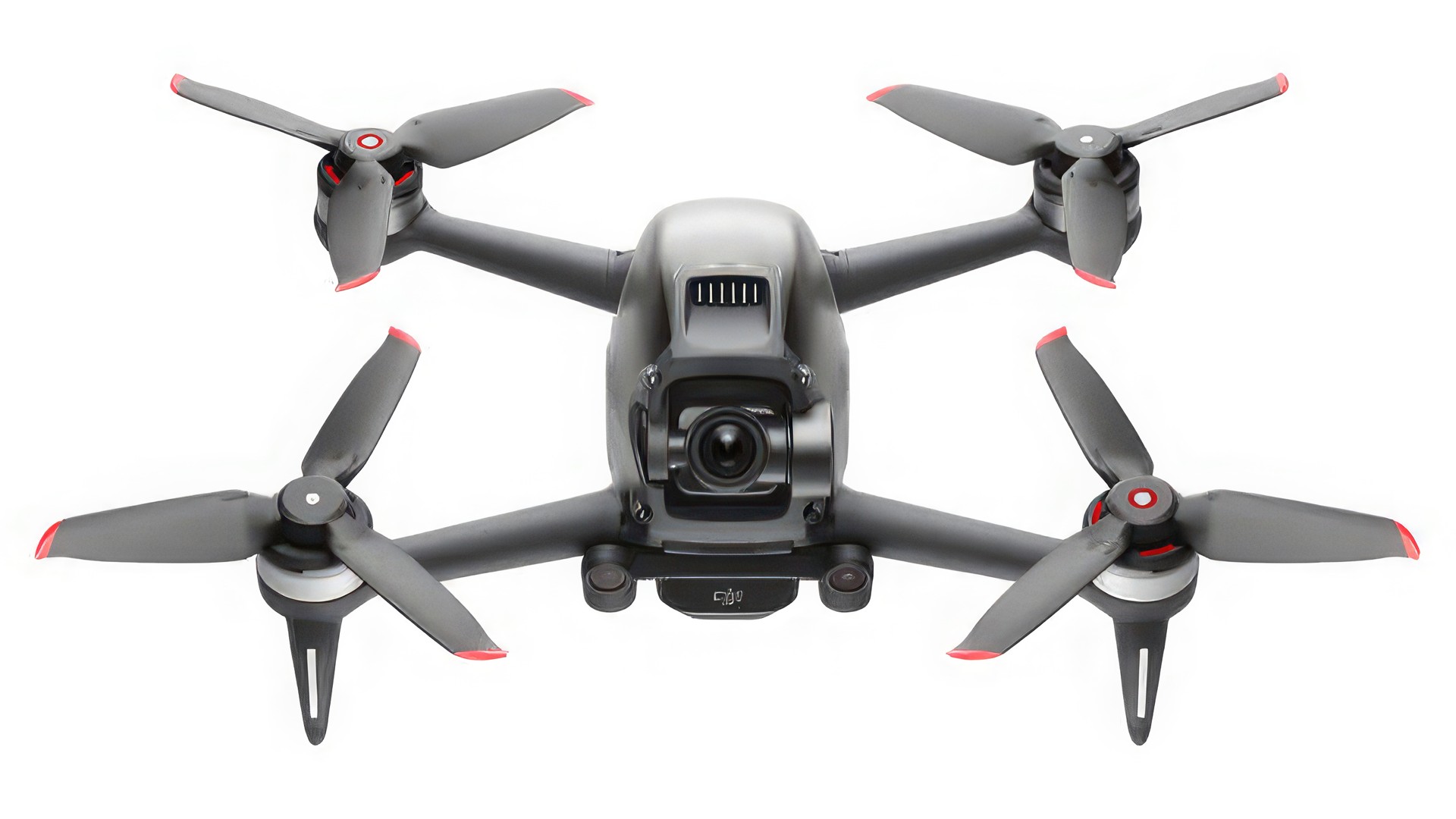
Digging Deeper: DJI FPV’s Technical Specs
The DJI FPV marks a significant departure from traditional drones, offering a unique blend of high-speed racing dynamics and immersive flight experiences. It has a top speed of 140 km/h, made possible by powerful motors and a streamlined design. The DJI FPV comes with a high-definition, low-latency FPV (First Person View) system, which includes the FPV Goggles V2 and FPV Remote Controller 3, for an unparalleled immersive flight experience. The integrated 4K/60fps 120 Mbps camera provides vivid images with sharp details.
Pick of the Pack: Affordable Racing Marvel
The DJI FPV marks DJI’s foray into high-speed drone racing, offering affordability and a host of race-centric features. This drone is a game changer for those looking to enter the racing scene without breaking the bank, combining DJI’s renowned quality and reliability with the exhilaration of FPV flight.
For Whom the Drone Flies: Aspiring Racers
The DJI FPV is perfect for aspiring drone racers. Its speed capabilities, coupled with the immersive first-person experience, make it an excellent learning tool for those looking to dive into the world of drone racing. Plus, its affordability makes it an accessible option for racing beginners.
Pros
- High-speed performance
- Immersive FPV experience
- Affordable entry into drone racing
- Integrated 4K camera
Cons
- Less flight time compared to non-racing drones
- Limited obstacle detection
Final Verdict: Your Affordable Ticket into Drone Racing
With the DJI FPV, DJI has successfully created an affordable and accessible gateway to the world of drone racing. Its high-speed capabilities and immersive FPV system provide a unique flying experience that’s perfect for those with a need for speed. While it does have some limitations, the pros of the DJI FPV far outweigh the cons, making it an ideal choice for aspiring drone racers.
EMAX Tinyhawk 2
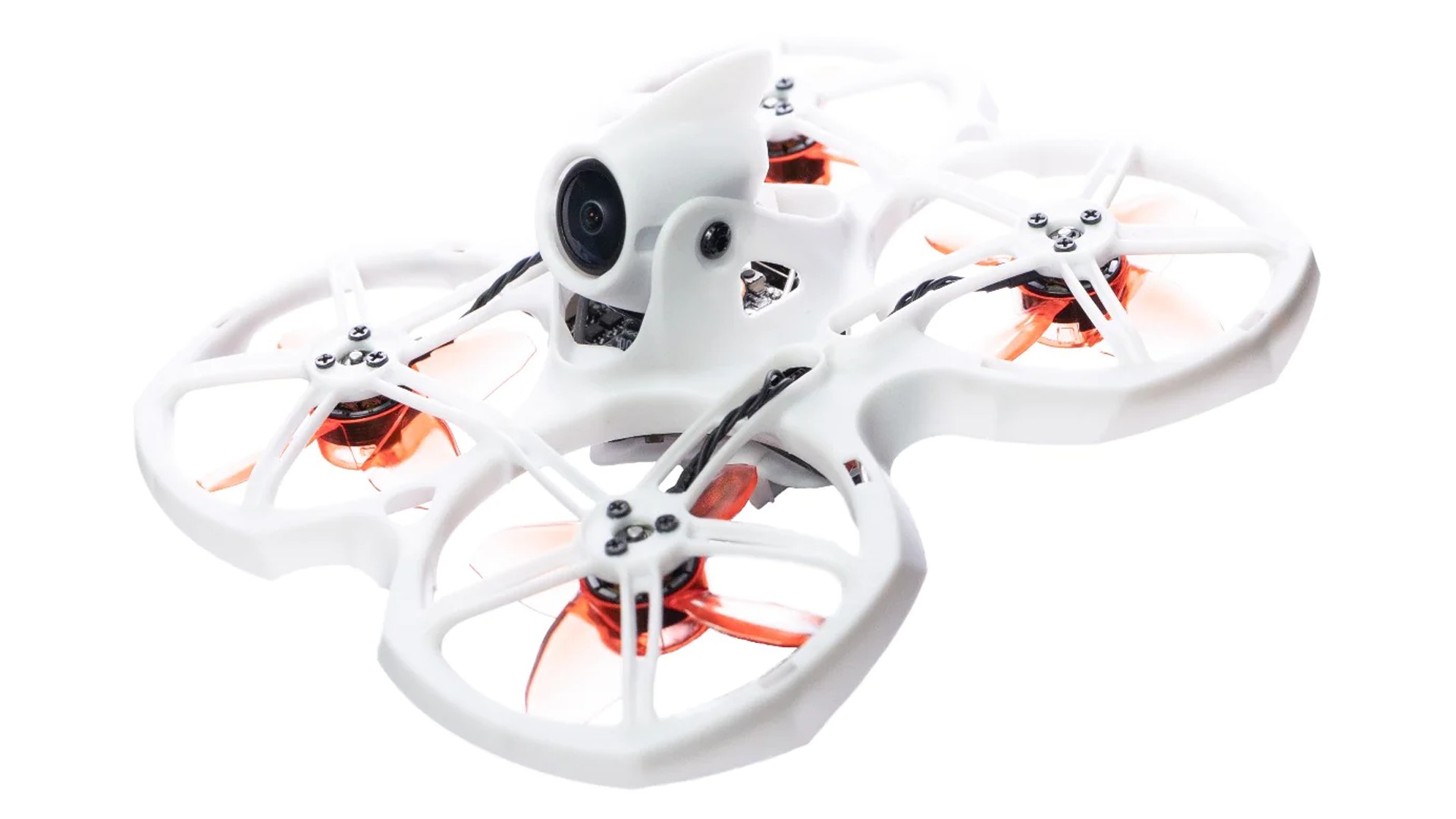
A Closer Look: The Powerhouse That is EMAX Tinyhawk 2
The EMAX Tinyhawk 2 is a compact yet powerful drone perfect for indoor FPV (First Person View) flying. It features an upgraded 25-200mW VTX, a rugged 4-in-1 flight controller, and a powerful 16000KV motor. Its adjustable camera angle caters to both beginner and advanced flying styles, providing a customized flying experience. The drone’s Runcam Nano 2 camera provides crisp and clear FPV footage for a more immersive flying experience.
Why It Stands Out: A Versatile Performer
The EMAX Tinyhawk 2 is all about versatility. It offers a blend of features that will appeal to beginners just getting into drone racing, as well as more experienced pilots looking for a drone that can deliver exhilarating FPV experiences. Despite its compact size, the drone doesn’t compromise on power or performance, making it a standout choice in the world of FPV racing drones.
Target Audience: Beginners and FPV Racers Alike
The EMAX Tinyhawk 2 is designed to appeal to a wide range of drone enthusiasts. It’s an excellent option for beginners due to its durability and easy-to-control nature. At the same time, its FPV capabilities and racing features make it a desirable choice for more experienced pilots looking to push their skills to the limit.
Pros
- Durable design, perfect for beginners
- Powerful performance in a compact size
- Adjustable camera angle for tailored flight experiences
- High-quality FPV footage
Cons
- Shorter flight time due to its racing nature
- May require additional tuning for optimal performance
Final Thoughts: A Small but Mighty Competitor
The EMAX Tinyhawk 2 is proof that size isn’t everything. This compact drone packs a punch in terms of performance, making it an excellent choice for those looking to get into drone racing or FPV flying. With a balance of beginner-friendly features and advanced capabilities, it’s a versatile choice that will serve drone enthusiasts of all experience levels.
DJI Mini 3
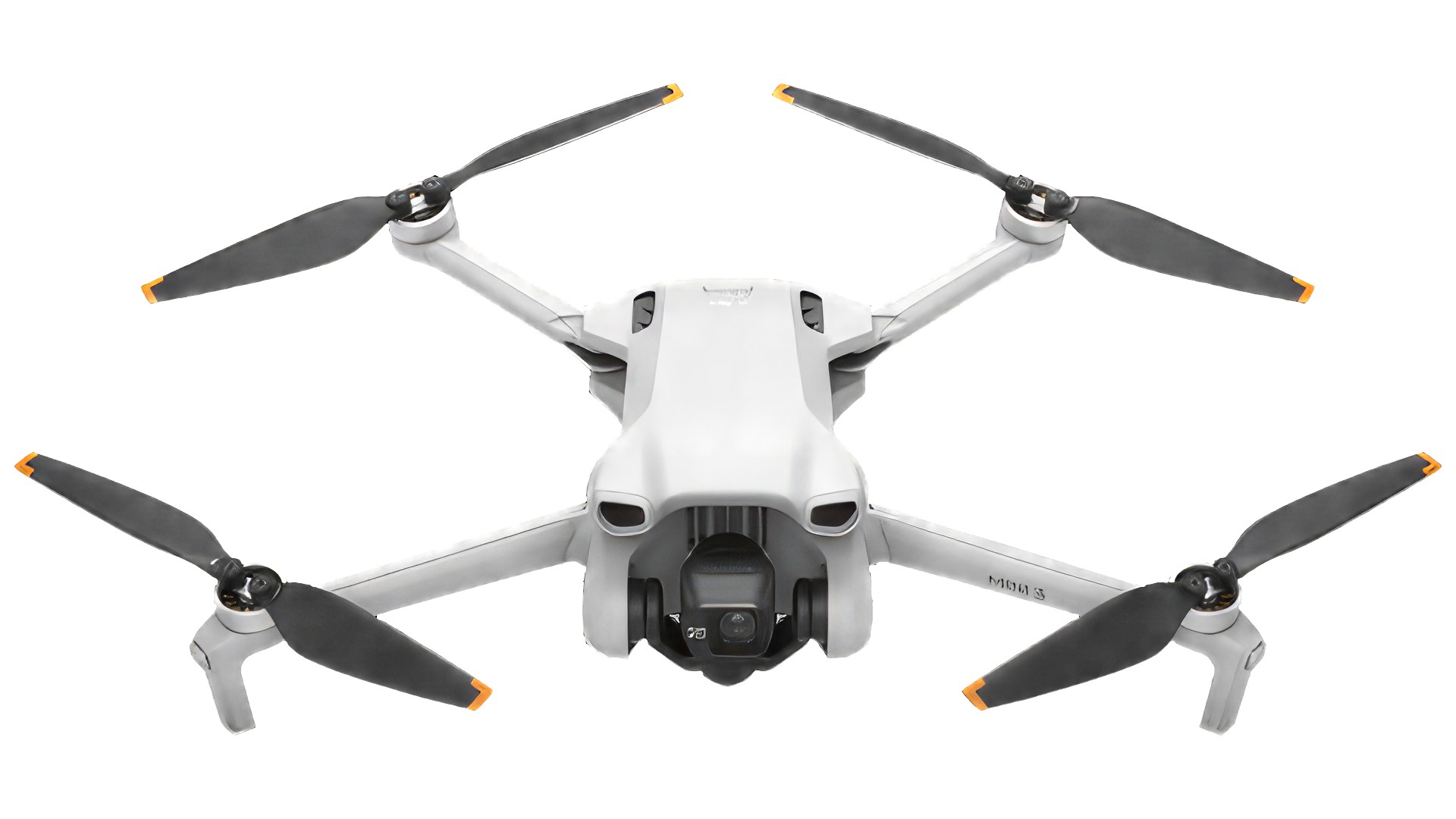
Unboxing the Power: DJI Mini 3’s Technical Superiority
The DJI Mini 3 is a marvel of engineering, combining portability and performance in a compact drone. With a takeoff weight of less than 249 grams, this drone is both lightweight and durable. It’s equipped with GPS, Galileo and BeiDou for precise navigation. It has three operating modes with different maximum speeds, climb and descent speeds, and angular velocities for flexible flying. Its maximum flight time is impressive, reaching up to 47 minutes in windless conditions when equipped with the Intelligent Flight Battery Plus.
The drone’s sensor system is equally remarkable, with precision measurement ranges for forward, backward and downward directions. It also uses a 1/1.3-inch CMOS sensor with 48 effective megapixels, offering video resolution up to 4K and a maximum video bit rate of 150 Mbps. The drone’s 3-axis mechanical gimbal ensures smooth footage even in challenging conditions.
The Choice is Clear: Why DJI Mini 3?
The DJI Mini 3 was selected for its unique combination of features, making it an excellent option for drone enthusiasts. Its standout feature is its ability to capture high quality vertical video, a desired capability in the current era of social media and vertical video platforms. The drone’s compact size, combined with its robust features, make it a versatile tool for various filming needs.
For Whom is the Sky: The Intended Users
The DJI Mini 3 is designed for a wide range of users. Its easy-to-use features make it a great choice for beginners who want to learn how to fly a drone. At the same time, its advanced video capabilities, including the unique vertical video feature, make it a valuable tool for content creators and social media enthusiasts. It’s also ideal for professional photographers and videographers looking for a compact, high-performance drone.
Pros
- Lightweight and compact design
- Powerful features in a small package
- Ability to capture high-quality vertical videos
- Long flight time
Cons
- Limited to fair weather conditions
- May require additional accessories for optimal use
Final Verdict: DJI Mini 3 – A Compact Powerhouse
The DJI Mini 3 proves that big things can come in small packages. This compact drone is packed with features that make it a versatile tool for a wide range of users, from beginners to professionals. Its unique ability to capture high-quality vertical video sets it apart, making it a valuable tool in the age of social media. While it has its limitations, its advantages far outweigh them, making the DJI Mini 3 a worthy investment for anyone looking to explore the skies.
DJI Mini 3 Pro
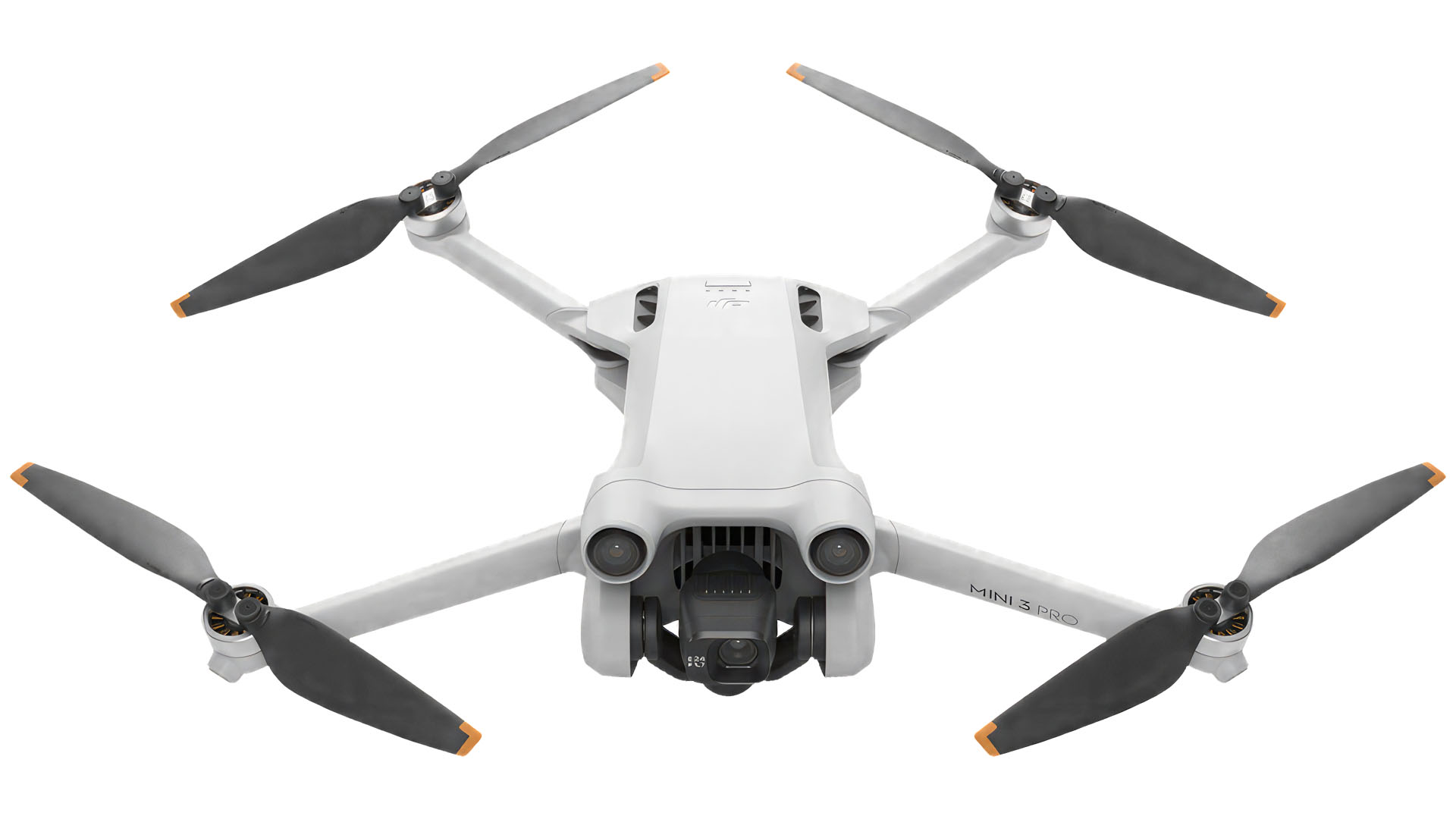
Unfolding the Features of the Mighty Mini
A tiny titan in the drone industry, the DJI Mini 3 Pro is the epitome of power, agility and creativity. Weighing less than 249 grams, this compact drone surprises users with its versatility and robust performance. This foldable, travel-friendly drone features a 1/1.3″ CMOS sensor with 48 effective megapixels. It can film in glorious 4K UHD resolution and even capture vertical video, opening up a world of creative perspectives for content creators.
Equipped with GPS, Galileo and BeiDou for accurate global navigation, the drone operates smoothly in a wide range of frequencies. It promises a maximum flight time of up to 47 minutes when using the Intelligent Flight Battery Plus, even in windless conditions. Its three-axis mechanical gimbal ensures stable, cinematic footage, making every shot a masterpiece.
Why the DJI Mini 3 Pro is a Mighty Addition to Your Arsenal
The DJI Mini 3 Pro is a game changer in the world of compact drones. Despite its small size, it doesn’t skimp on professional features. It boasts an impressive range, exceptional image and video quality, and extended flight time. It also stands out for its ability to shoot vertical video, a feature rarely found in other drones, making it an invaluable tool for social media content creators.
Empowering Novices and Experts Alike
Whether you’re a beginner exploring the world of drone photography or a seasoned pro looking for a compact yet powerful drone, the DJI Mini 3 Pro has you covered. Its easy-to-use features, including QuickShot modes like Dronie, Helix, Rocket, Circle, Boomerang and Asteroid, make capturing stunning aerial footage a breeze. Its lightweight design exempts it from certain regulations, making it a hassle-free companion on your creative journeys.
Pros
- Compact and lightweight design for easy portability
- Exceptional image and video quality with 4K UHD recording
- Vertical video shooting for enhanced creative possibilities
- Impressive maximum flight time of up to 47 minutes
- Equipped with GPS, Galileo, and BeiDou for accurate navigation
Cons
- Lack of auxiliary bottom light
- No obstacle avoidance sensors
- Operating temperature range could be limiting for some environments
Concluding Thoughts on the DJI Mini 3 Pro
The DJI Mini 3 Pro proves that big things really do come in small packages. Its ability to capture high-quality images, 4K video and even vertical video makes it a versatile tool for content creators. While it may lack some of the advanced features found in higher-end models, its impressive flight time, accurate navigation system, and unique capabilities make it a strong contender in the compact drone market. Whether you’re just getting started with aerial photography or looking for a travel-friendly drone that doesn’t compromise on quality, the DJI Mini 3 Pro is an investment worth considering.
DJI Avata
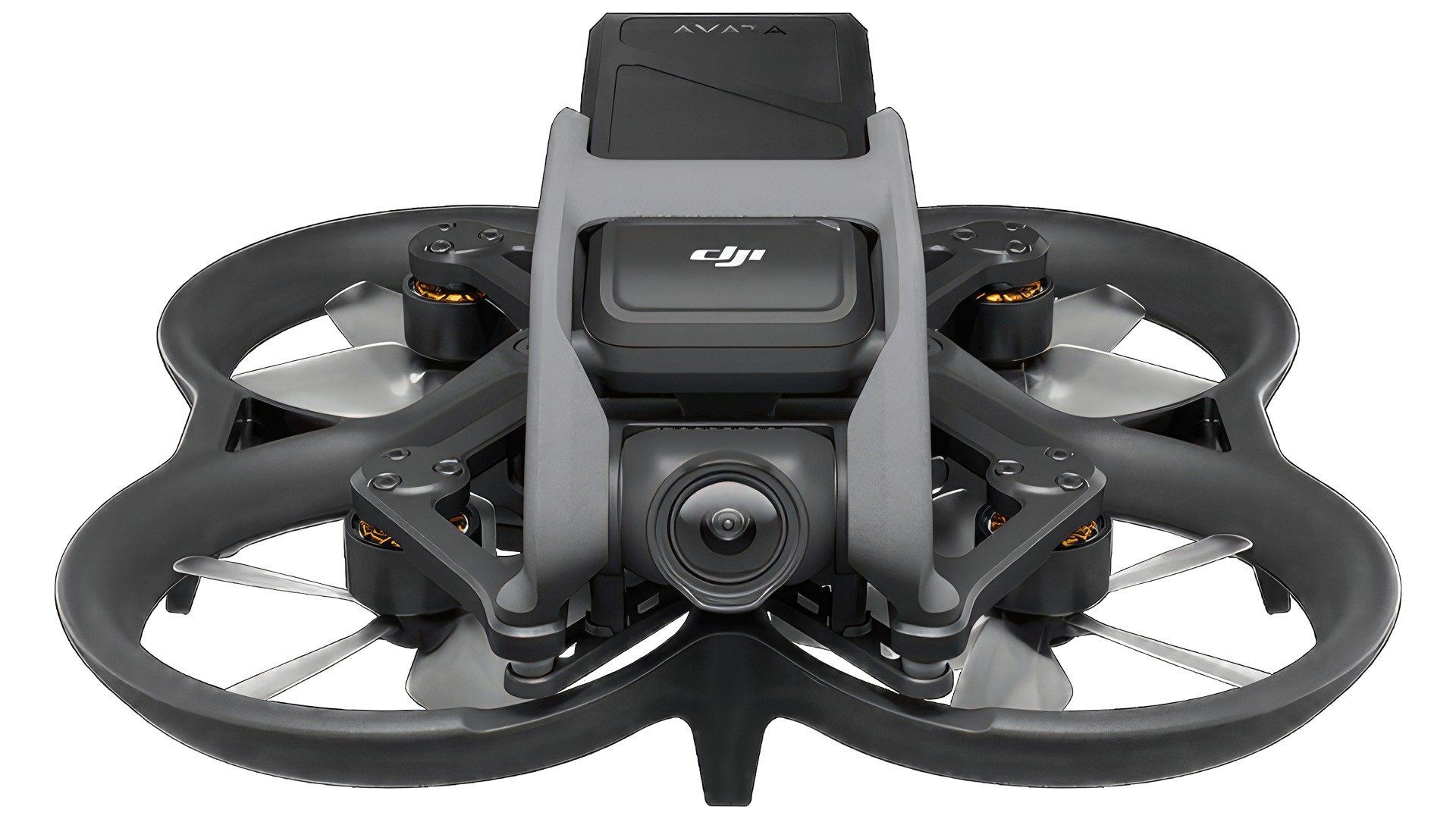
Unveiling the Intricacies of the DJI Avata
Meet the DJI Avata – a pioneer in small FPV drones. The DJI Avata comes in a compact package, but don’t let its size fool you. This drone is a powerhouse of features and functionality, making it a favorite of drone enthusiasts and professionals alike. The DJI Avata is equipped with a 1/1.7-inch CMOS sensor that effectively captures 48MP images, revealing the finest details in your footage. The drone features a lens with a field of view of 155°, an equivalent focal length of 12.7 mm and an aperture of f/2.8. With a focus range of 0.6m to infinity, capturing vast landscapes or close-up shots is a breeze.
The ISO range varies from 100-6400 for automatic settings and 100-25600 for manual settings, offering flexibility depending on lighting conditions. Shutter speeds in both video and photo modes range from 1/8000 to 1/50 second for sharp, blur-free results. The drone supports a maximum image size of 4000×3000 and records video in MP4 format at a maximum bit rate of 150 Mbps. The DJI Avata’s gimbal provides smooth footage and images with a mechanical tilt range of -95° to 75° and a controllable range of -80° to +65°. Its stabilization is single-axis (tilt), with an impressive maximum control speed of 60°/s and an angular oscillation range of ±0.01°.
Why the DJI Avata Is the Ace in Your Deck
The DJI Avata’s size, features, and performance make it an unbeatable choice for anyone looking to enter the world of FPV drones. Despite its compact size, it offers top-notch image and video quality, superior range, and an impressive maximum hover time of approximately 18 minutes.
The Ideal Companion for Newbies and Pros Alike
The DJI Avata is designed to meet the needs of beginners and experienced pilots. Its advanced features combined with easy-to-use functions make it an excellent choice for individuals entering the world of drone photography and videography, or for seasoned professionals looking for a portable yet powerful drone.
Pros
- Compact size and lightweight design
- Superior image and video quality with 48 MP sensor
- Excellent range with robust stabilization
- Impressive hover time of approximately 18 minutes
- User-friendly, catering to both beginners and professionals
Cons
- Limited to single-axis stabilization
- No real-time screen correction during recording
Concluding Thoughts on the DJI Avata
The DJI Avata is emerging as a strong contender in the world of small FPV drones. Its fusion of portability and performance, coupled with an array of features, makes it a worthwhile addition to any drone collection. While it may lack some advanced features, its overall capabilities make it an excellent choice for anyone looking to capture stunning aerial footage or simply enjoy the thrill of flying.
DJI Air 2S
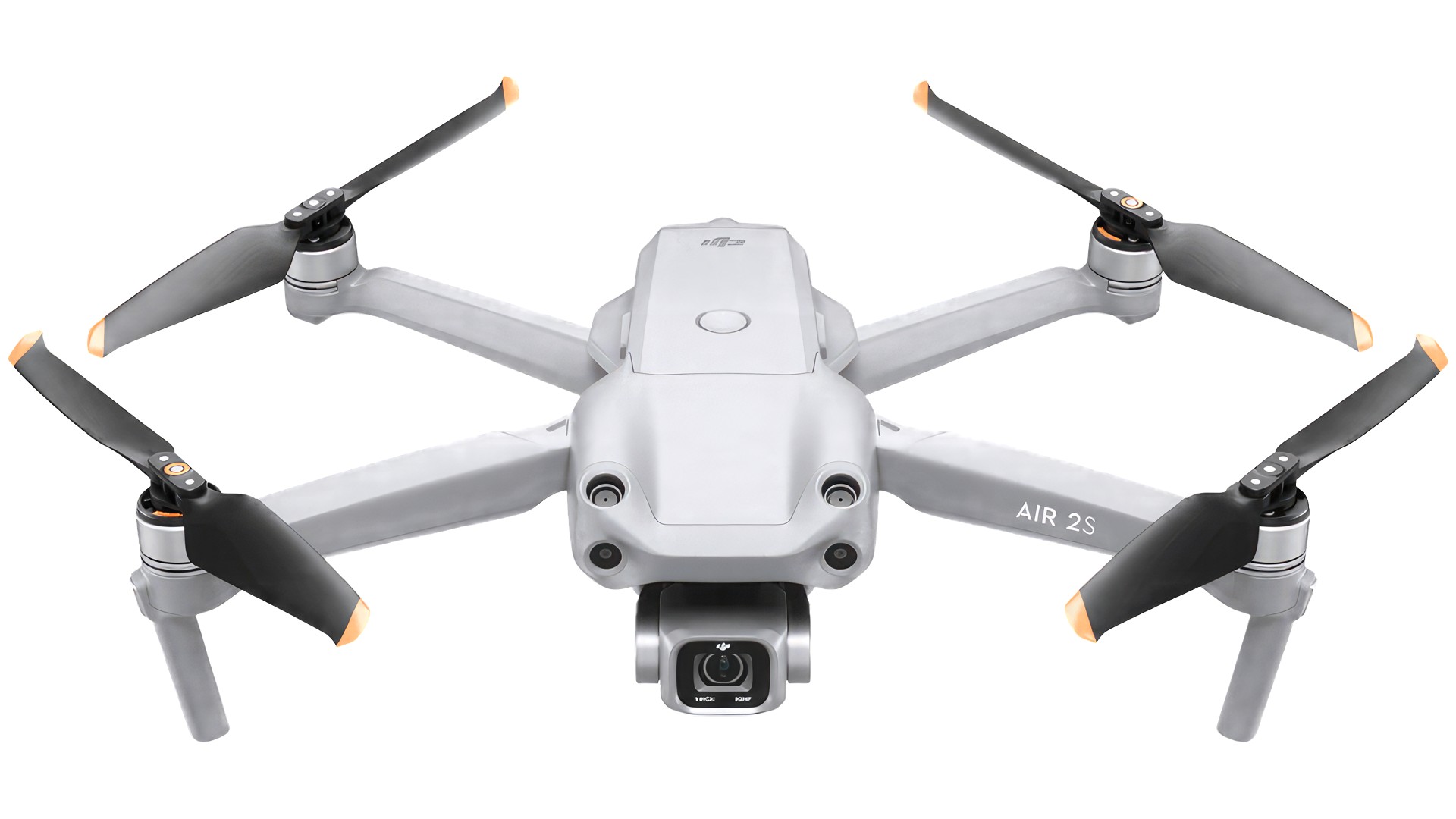
Unpacking the Powerhouse of Performance
The DJI Air 2S is a remarkably powerful drone, tipping the scales at a takeoff weight of 595 grams. This drone is a marvel of engineering, measuring 180×97×77mm when folded and 183×253×77mm when unfolded. The DJI Air 2S is equipped with a robust 1-inch CMOS sensor that captures stunning 20MP photos with an impressive 2.4μm pixel size. The drone uses a dual frequency of 2.4 GHz and 5.8 GHz for transmission, ensuring a reliable, interference-free connection. The DJI Air 2S features a three-axis motorized gimbal for stable, steady footage. With an extended maximum flight time of 31 minutes and a maximum hover time of 30 minutes (in a controlled windless environment), this drone is truly best-in-class.
The DJI Air 2S: Setting New Standards for Drone Technology
The DJI Air 2S stands out from the crowd with an impressive combination of high performance, advanced features and reliability. Its large 1-inch image sensor delivers superior image quality, making it a top choice for aerial photography and videography. The drone’s excellent range (up to 18.5 km with no wind) and extended flight time make it a perfect fit for professionals and hobbyists alike.
Soaring High: A Perfect Companion for the Creative Enthusiast
The DJI Air 2S is designed for those who crave creativity without compromise. Its advanced features like digital zoom and a wide range of video resolutions (up to 5.4K) make it a must-have for creative enthusiasts, whether they are beginners or experienced pilots. With its intuitive controls and user-friendly design, even newcomers to the world of drones can easily start capturing stunning aerial footage.
Pros
- Superior image quality with 1-inch image sensor
- Extended flight and hover times
- Impressive max flight distance
- Multiple video resolutions and digital zoom capabilities
- Advanced features suited for both beginners and experienced users
Cons
- Limited internal storage (8GB)
- Lack of obstacle avoidance sensors
Soaring Above: The Final Word on DJI Air 2S
A great addition to any drone enthusiast’s collection, the DJI Air 2S strikes an excellent balance between power, performance, and ease of use. Its large 1-inch image sensor, extended flight time, and impressive range make it an excellent choice for anyone interested in aerial photography or videography. While it does have some limitations, such as limited internal storage, it’s a highly capable drone that’s well worth the investment. Its powerful features and user-friendly design make it an excellent choice for both novice and experienced drone users.
DJI Phantom 4 Pro v2.0
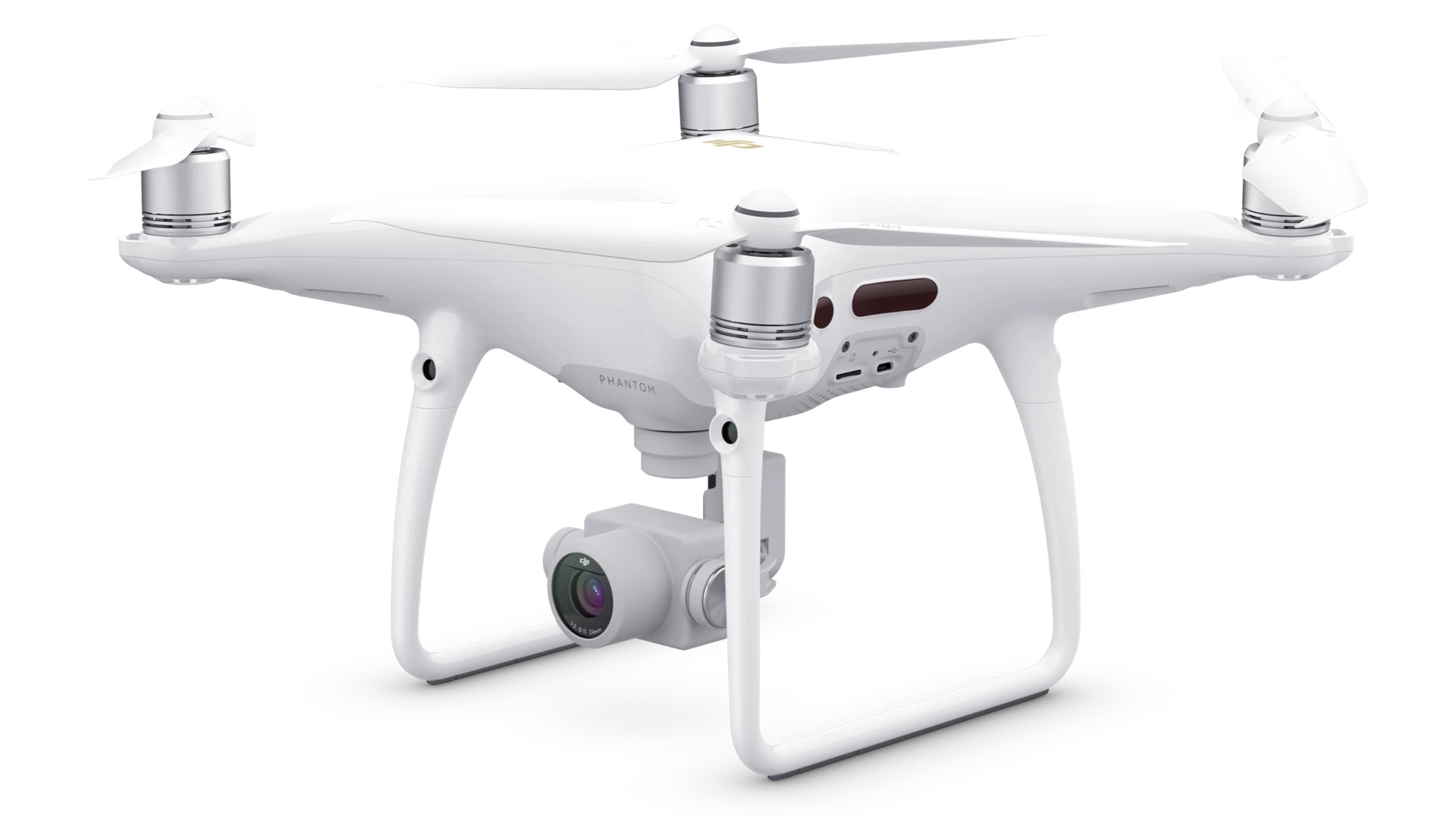
Unleashing the Power of Aerial Photography
The DJI Phantom 4 Pro v2.0 is a game-changer in aerial photography. Weighing in at just 1375 grams, this impressive drone is built for precision and durability. The Phantom 4 Pro v2.0 is equipped with a 1-inch CMOS sensor that delivers 20 million effective pixels. It also offers a remarkable variety of video recording modes, from C4K to HD, in both H.264 and H.265 formats, ensuring that every shot is captured with the utmost clarity.
Its unmatched speed, up to 45 mph in S mode, coupled with a maximum flight time of approximately 30 minutes, allows photographers to capture a vast array of footage in a single flight. The drone’s state-of-the-art 3-axis gimbal provides smooth, shake-free footage even in the most challenging conditions.
The Phantom in the Room: Why the DJI Phantom 4 Pro v2.0 Stands Out
The DJI Phantom 4 Pro v2.0 sets the standard for professional drone photography. With its powerful camera, reliable performance and advanced features, it’s the ultimate tool for photographers looking to expand their creative horizons. The drone’s exceptional maximum operating altitude of up to 19685 ft above sea level and remarkable wind speed resistance of up to 10 m/s make it a trusty companion for high-altitude, high-wind photography adventures.
For the Professional Photographer in the Sky
Designed with professional photographers in mind, the DJI Phantom 4 Pro v2.0 offers a wide range of features to create stunning aerial imagery. Its advanced vision system, coupled with an infrared sensing system, ensures safe navigation and obstacle avoidance. With GPS/GLONASS satellite positioning systems, maintaining a steady hover and ensuring accurate positioning is effortless, allowing photographers to focus on capturing the perfect shot.
Pros
- High-resolution 1-inch CMOS sensor for exceptional image quality
- Versatile video recording modes and high max video bitrate of 100 Mbps
- Impressive maximum speed and flight time
- Advanced Vision and Infrared Sensing Systems for safer flights
- GPS/GLONASS positioning systems for accurate hovering and positioning
Cons
- Weight might require additional regulations and permits in some countries
- Requires a certain level of expertise to fully exploit its features
A Skyward Leap: The DJI Phantom 4 Pro v2.0 Verdict
The DJI Phantom 4 Pro v2.0 is a spectacular drone that is sure to raise your aerial photography standards. With its professional camera, rugged construction and advanced safety features, it offers an unparalleled flying experience. While it requires a certain level of expertise and may require additional permits due to its weight, the sheer quality of its performance and the exceptional images it can produce make it a worthwhile investment for any serious aerial photographer.
Autel Evo Nano+
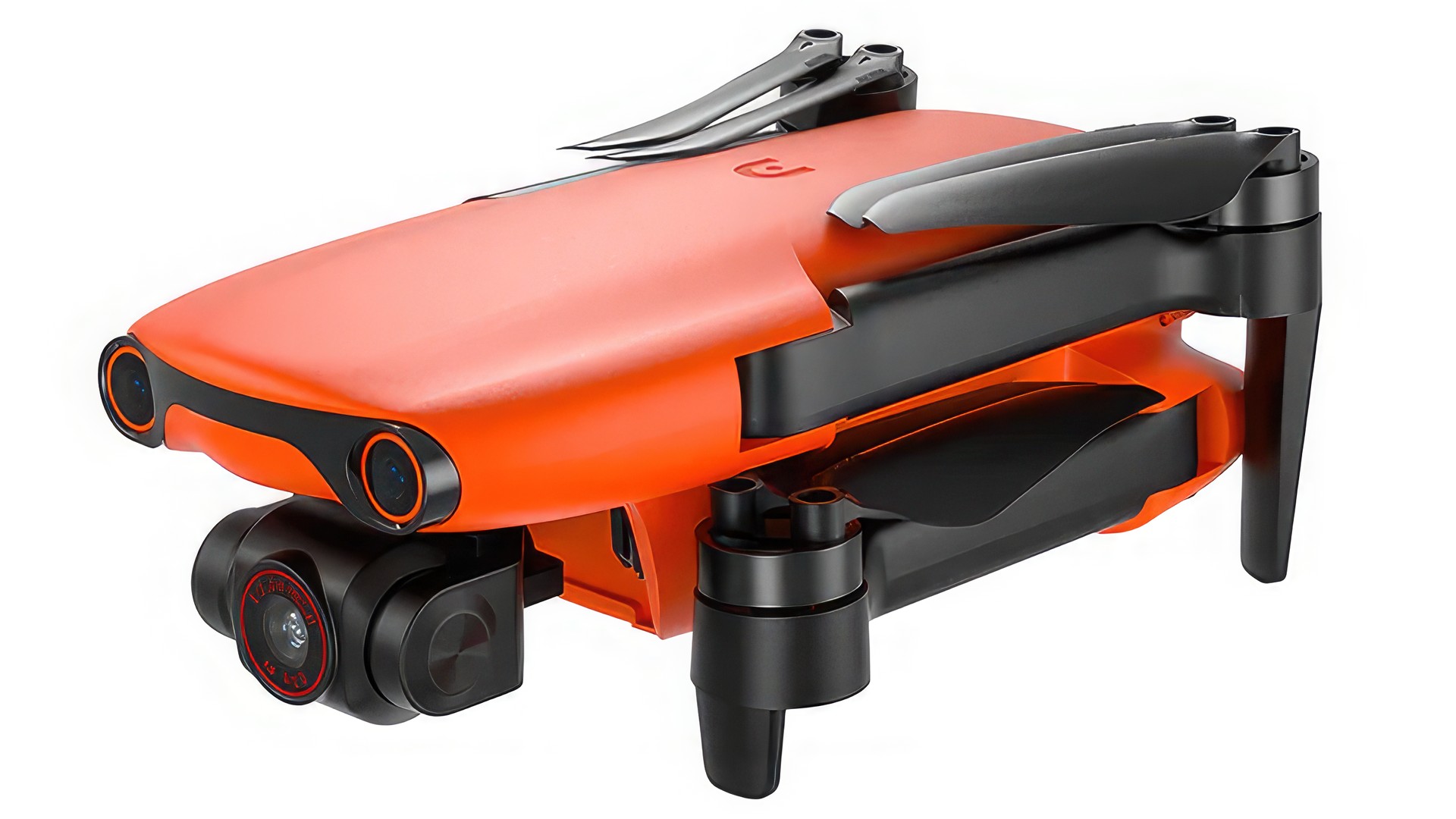
Unraveling the Technical Intricacies
The Autel Evo Nano+ is a powerful force in the drone world, tipping the scales at just 249 grams. Despite its lightweight design, it packs an impressive 1/1.28-inch CMOS sensor capable of capturing stunning 50MP photos and 4K/30FPS HDR video. The Evo Nano+ uses a 10km tri-band image transmission system to ensure stable, interference-free connections even at long distances.
The drone is equipped with a three-axis mechanical stabilization gimbal for ultra-smooth, cinema-quality footage. With a 28-minute battery life, you have plenty of time to get the perfect shot. It offers forward, backward and downward obstacle avoidance for added safety and versatility. Note that while the Evo Nano+ doesn’t have built-in storage, it does allow for external storage solutions based on your specific needs.
Why the Autel Evo Nano+ Earns its Wings
The Autel Evo Nano+ is a non-DJI drone that has truly earned its place in the drone market. Despite its compact size, it delivers power, performance, and portability that rivals many larger, more expensive models. The drone offers high-quality footage, excellent range, and a battery life that ensures you won’t miss those important shots. Whether you’re an experienced drone pilot or just getting started, the Evo Nano+ offers features and capabilities that make it a worthy addition to any collection.
Engineered for All Enthusiasts
The Autel Evo Nano+ is a dream for both beginners and experienced pilots. It offers software cropping for portrait shots and comes with creative apps like Rocket, Orbit, Flick and Fade Away to add a creative flair to your aerial footage. While the drone doesn’t offer route planning, it does offer a level of manual control that experienced pilots will appreciate.
Pros
- Lightweight and compact, yet powerful
- High-resolution photo and video capabilities
- Excellent transmission range
- Reliable battery life
- Obstacle avoidance system for safer flights
Cons
- No built-in storage requires the use of SD cards
- Lack of route planning might be challenging for some users
Soaring Beyond Expectations: The Autel Evo Nano+ Verdict
For those looking for a high-quality, non-DJI drone, the Autel Evo Nano+ is an excellent choice. It offers remarkable photo and video capabilities, impressive range, and a reliable battery life that ensures plenty of flight time. While it does require some manual control and external storage solutions, its performance, safety features, and creative applications make it a strong contender in the drone market. The Autel Evo Nano+ truly exceeds expectations and proves that DJI isn’t the only name in the game when it comes to top-of-the-line drones.
